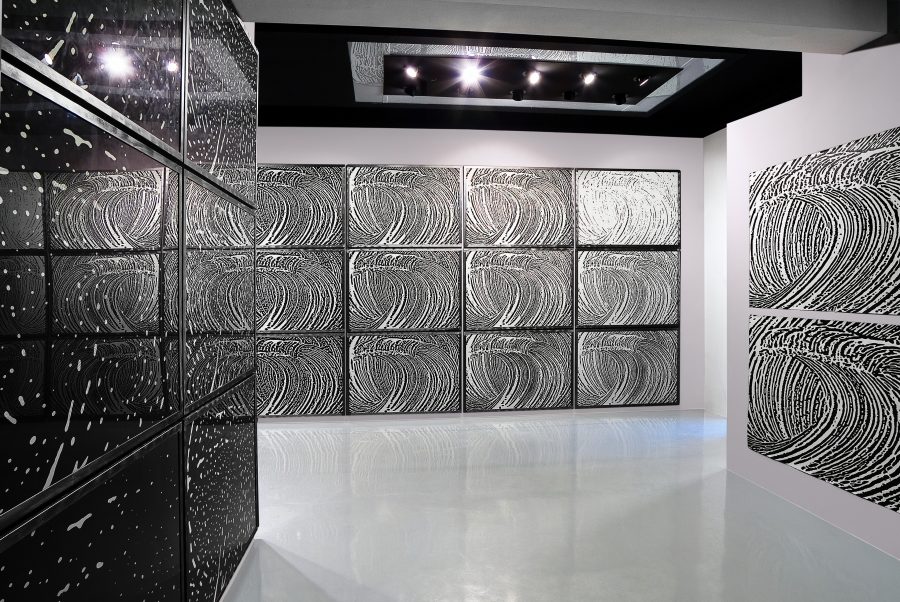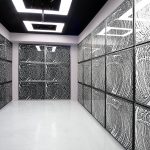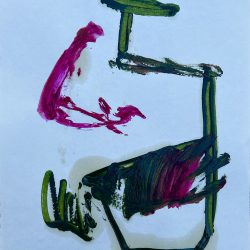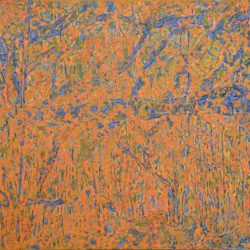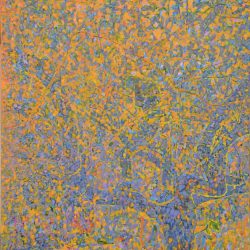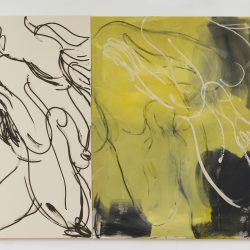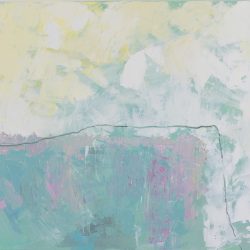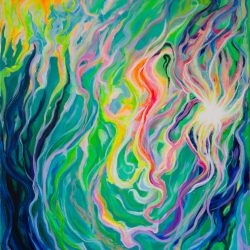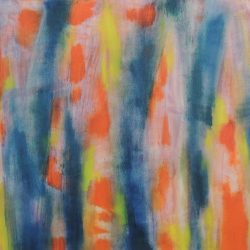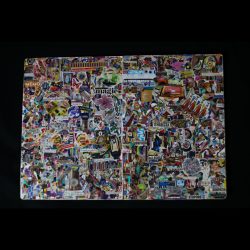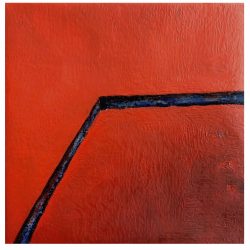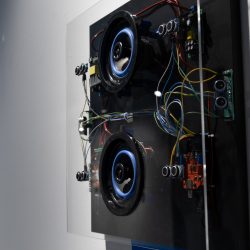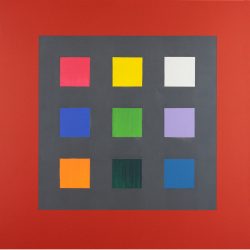work
motion painting project
| category | Painting |
| subject | Abstract |
| tags | painting, leduc, artgallery, ink |
| base | 141 cm |
| height | 100 cm |
| depth | 5 cm |
| year | 2010 |
Each one of Le Duc’s waves is a unique
image and not a repetition, a series or a
visual narrative similar to the sequence
of a cartoon animation. In order to
activate the cinematic mechanism of the
succession of frames more effectively
and with fewer perceptual constrictions
he developed Motion Painting. The
series of drawings soap opera consists
of are now visible on the DVD medium,
and the alternating monochrome ‘action’
lines of the wave revert to their former
white-on-black pattern. This ambitious
project requires a vast closed and dark
space of at least 150 metres in length
whose blackness conveys the feeling of a
timeless void. The installation comprises
the sequence of the 35 drawings of soap
opera rear-projected on 35 translucent
screens, each one of them necessarily
supported by its own video projector.
The four-metre-high screens are
inclined in order to heighten the sense
of drama and to convey the feeling of
impending danger. The sequence of
waves shown by the 35 video projectors
can be seen on each visual display
which is repeated unchanged. Viewers
may perceive the work in two parallel
dimensions: the real space in which
they stand and the virtual one in which
they are reflected. The configuration of
the screens allows them to observe the
images at any given moment, both in the
three-dimensional space in which they
stand and in the entire uninterrupted
sequence on each screen. Starting from
the first screen the number of frames
in each sequence is arranged in such
a way that it goes from the phase of
maximum development of the wave
down to its slow fading out into black.
In this respect the sequence of images
is related to the peak and the ebb, to
the process whereby a single wave
takes shape and fades out: the various
frames of soap opera correspond to the
‘motion’ whereby the wave takes shape
and becomes such. The simultaneous
projections of the video loop will produce
a continuous flow through the screens,
and Le Duc refers to Motion Painting as
‘architecture of light and movement’
james putnam
(excerpt)
43 ink on paper
(100x141 cm)
image and not a repetition, a series or a
visual narrative similar to the sequence
of a cartoon animation. In order to
activate the cinematic mechanism of the
succession of frames more effectively
and with fewer perceptual constrictions
he developed Motion Painting. The
series of drawings soap opera consists
of are now visible on the DVD medium,
and the alternating monochrome ‘action’
lines of the wave revert to their former
white-on-black pattern. This ambitious
project requires a vast closed and dark
space of at least 150 metres in length
whose blackness conveys the feeling of a
timeless void. The installation comprises
the sequence of the 35 drawings of soap
opera rear-projected on 35 translucent
screens, each one of them necessarily
supported by its own video projector.
The four-metre-high screens are
inclined in order to heighten the sense
of drama and to convey the feeling of
impending danger. The sequence of
waves shown by the 35 video projectors
can be seen on each visual display
which is repeated unchanged. Viewers
may perceive the work in two parallel
dimensions: the real space in which
they stand and the virtual one in which
they are reflected. The configuration of
the screens allows them to observe the
images at any given moment, both in the
three-dimensional space in which they
stand and in the entire uninterrupted
sequence on each screen. Starting from
the first screen the number of frames
in each sequence is arranged in such
a way that it goes from the phase of
maximum development of the wave
down to its slow fading out into black.
In this respect the sequence of images
is related to the peak and the ebb, to
the process whereby a single wave
takes shape and fades out: the various
frames of soap opera correspond to the
‘motion’ whereby the wave takes shape
and becomes such. The simultaneous
projections of the video loop will produce
a continuous flow through the screens,
and Le Duc refers to Motion Painting as
‘architecture of light and movement’
james putnam
(excerpt)
43 ink on paper
(100x141 cm)



